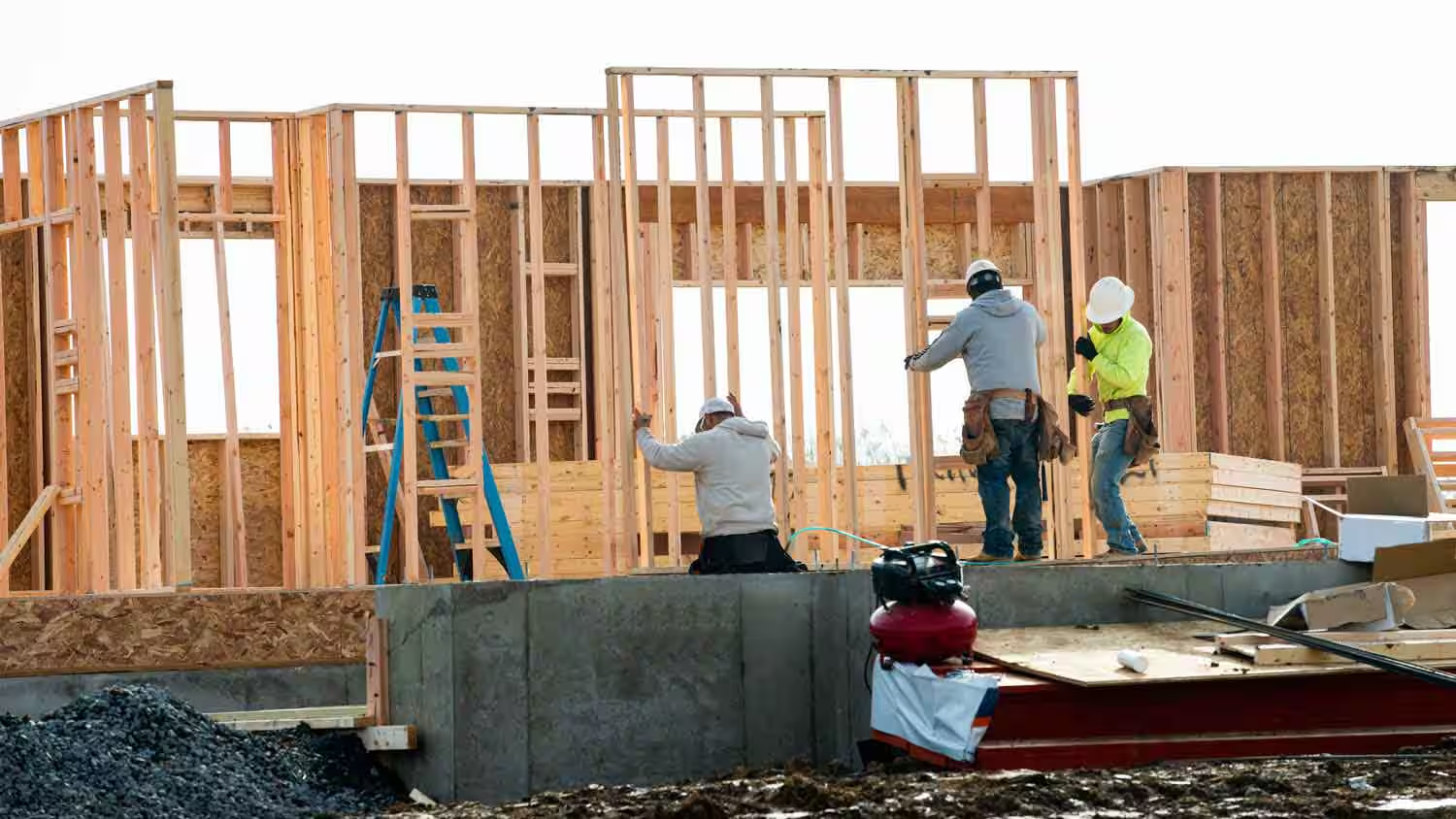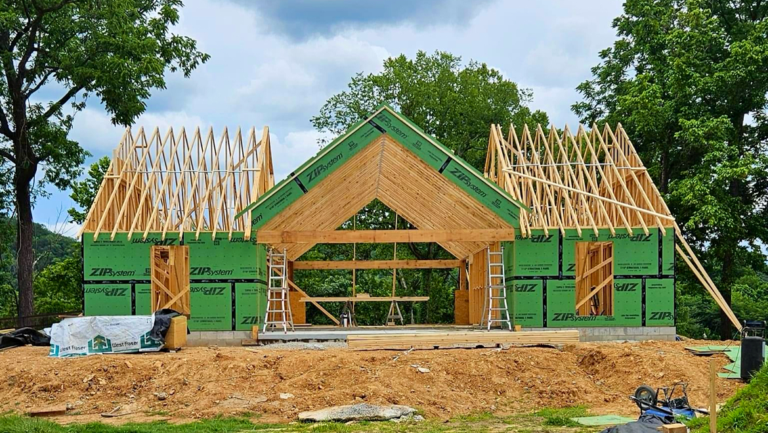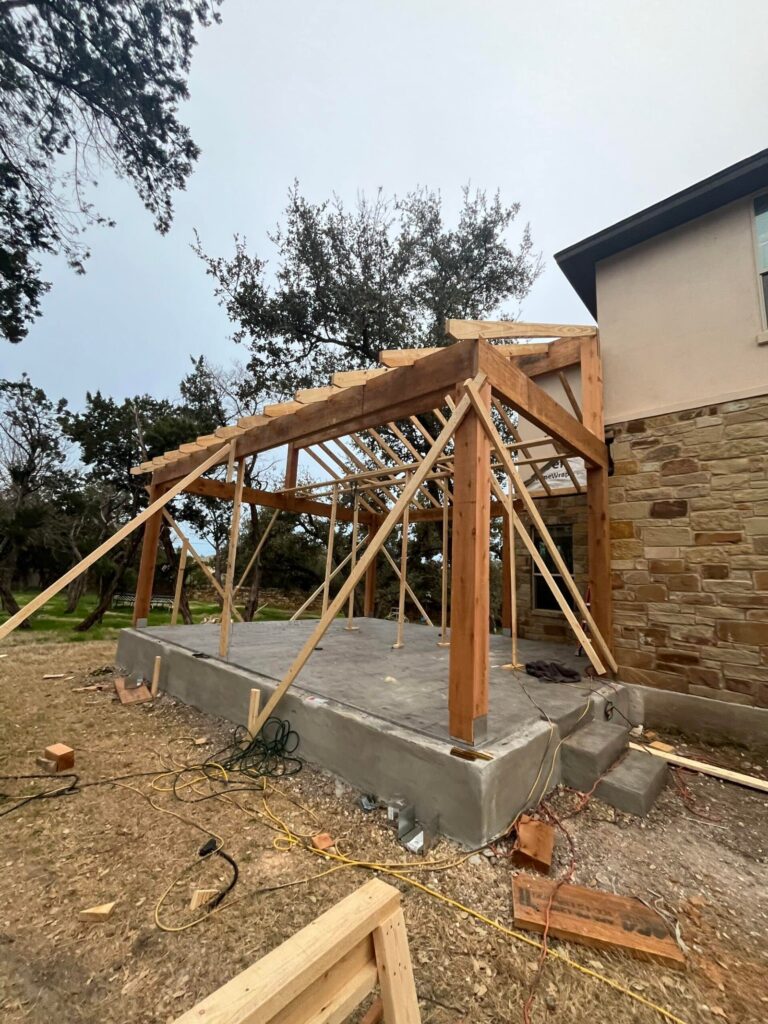Framing Labor Costs: What to Expect for Your Project
When it comes to home construction, framing is one of the most critical stages. Whether you’re building a custom home, a detached garage, or embarking on a renovation project, the cost of framing is a significant part of your overall construction budget. In this article, we’ll explore the various factors influencing framing labor costs and provide an accurate estimate of what you can expect for your project. From house framing costs to labor rates and material expenses, we’ll cover everything you need to know for effective budget planning.
Understanding Framing and Its Importance in Construction
Framing forms the structural skeleton of a building, providing the foundation for walls, floors, and the roof. Whether it’s residential framing for a single-family home or commercial construction for larger buildings, framing serves as the backbone of any construction project. It ensures your building meets current building codes and is structurally sound for years to come.
The cost for framing will depend on various factors, such as house size, type of framing material, and labor costs. To get a detailed breakdown of these expenses, it’s essential to understand the components involved.
Components of a Framing Project
A framing project includes various stages, from building the exterior walls to erecting roof trusses and supporting load-bearing walls. The following are some critical components that affect framing costs:
- Exterior walls: These walls bear the majority of the load and are framed using either dimensional lumber or steel framing, depending on your project type.
- Roof trusses: These are structural components that support the roof. The cost of roof framing depends on whether you choose conventional roof trusses or a complex roof design like vaulted ceilings.
- Load-bearing walls: These walls support the structure above and require extra materials, which add to the overall cost.
- Garage framing: Detached garage framing has its own set of costs, especially if you need custom designs.
- Basement framing: While often not part of the primary framing, basement framing can add additional expenses.
Now, let’s explore the most significant factor in any framing project—cost.
Framing Labor Costs: What to Expect
The cost of labor for framing depends on several factors such as the size of your home, the complexity of the design, and local labor rates. For instance, framing labor for a 2,000-square-foot home will cost significantly less than that of a 3,000-square-foot multi-story home with intricate designs.
Labor Rates and Cost Factors
Labor rates for framing can vary widely depending on the region and the experience of the crew. The Bureau of Labor Statistics provides valuable data on average labor rates in different areas, which can help in calculating your labor expenses.
Key factors influencing framing labor costs include:
- House size: The square foot cost is directly related to the size of your home. Larger homes generally incur higher labor costs due to the increased amount of framing work required.
- Complex designs: If your project involves vaulted ceilings, complex roof designs, or custom homebuilding, expect higher labor costs.
- Framing material: The type of material used—whether dimensional lumber, steel framing, or concrete framing—will influence the overall labor costs.
Cost Estimate Examples
Here’s a rough estimate of labor costs for different types of projects:
| Project Type | Labor Costs (per square foot) |
|---|---|
| Basic one-story house | $4 – $6 |
| Two-story house | $6 – $8 |
| Complex custom home | $8 – $12 |
| Detached garage | $2,500 – $5,000 (total cost) |
Material Costs in Framing
While labor costs are a significant part of the equation, material costs can vary widely depending on the type of framing material you choose. Common materials include dimensional lumber, steel framing, and concrete. Each material has a different price range, affecting your total construction costs.
Cost of Lumber
Dimensional lumber is the most commonly used material for residential framing projects. The cost of lumber can fluctuate due to factors like domestic steel prices, exchange rates, and availability. According to Craftsman Book Company, the cost of lumber for framing a standard home can range from $3 to $12 per square foot, depending on the quality and type of wood.
Cost of Steel Framing
For those opting for steel framing, expect higher material costs. While steel frames offer durability and are commonly used in commercial projects, they can cost up to 25% more than wood framing. On average, steel framing costs range from $10 to $20 per square foot.
Additional Material Costs
Additional framing costs, such as sheathing, nails, and wall jacks, should also be factored into your overall material budget. Keep in mind that cost variances may occur depending on the project size, location, and current market conditions for building materials.
Cost Calculator for Framing
To get an accurate estimate of your framing project, it’s helpful to use a cost calculator or a project management tool. These tools provide a detailed breakdown portion of labor and material costs, allowing for effective budget planning.
Using a Cost Estimator Tool
Online tools like the Homewyse Cost Calculator and Custom Calculators from Direct Source can give you a fair pricing estimate. Simply input details like house size, framing material, and labor expenses to get a rough estimate of your project’s total cost.
Here’s an example of how you might calculate framing costs for a 2,000-square-foot home:
| Cost Factors | Low Estimate | High Estimate |
|---|---|---|
| Labor costs | $8,000 | $16,000 |
| Material costs | $6,000 | $12,000 |
| Additional framing costs | $1,000 | $2,500 |
| Total framing costs | $15,000 | $30,500 |
This is just a rough estimate and should be adjusted according to your specific project type, framing materials, and location.
Other Cost Factors to Consider
There are several additional costs to consider when planning your framing project. From demolition costs to coordination tools for project management, here are some important factors:
Demolition Costs
If you’re remodeling or demolishing existing structures, the cost of demolition can significantly add to your framing expenses. Depending on the complexity of the demolition, costs can range from $500 to $3,000.
Building Codes and Permits
Meeting current building codes is essential for any framing project. Ensure you check with your local building department to understand permit requirements and other costs that might arise. Failure to comply with building codes can result in fines or delays in your project.
Foundation Type
The type of foundation you choose—whether a concrete slab foundation or another option—can also impact framing costs. Some foundations require more complex framing, particularly for larger homes or custom designs.
How to Keep Framing Costs Down
Now that you have a better understanding of framing labor and material costs, it’s important to explore ways to manage these expenses.
Tips for Reducing Costs
- Advanced framing techniques: These methods reduce the amount of lumber needed, lowering both material and labor costs.
- Accurate cost estimates: Use a building estimator reference book or consult with a contractor to get an accurate estimate of your project’s costs.
- Shop for fair pricing: Always compare prices for both materials and labor. Use price comparison tools to find the best deals on lumber, steel framing, and other essential materials.
- Plan ahead: Make sure your building plans are clear and detailed to avoid costly changes later in the project.
Get an Accurate Estimate for Your Framing Project
Whether you’re building a custom home or framing a detached garage, getting an accurate estimate is crucial to staying within your construction budget. With the right tools and resources, you can plan effectively and ensure that your project meets both your financial and structural expectations.
Contact LV Design & Build for a Custom Estimate
At LV Design & Build, we understand the complexities of framing projects. Our team of experienced professionals will work with you to provide a detailed breakdown of labor and material costs, tailored to your specific project type and needs. We offer fair pricing, expert guidance, and custom estimates to help you make informed decisions.
Contact us today for a consultation and get started on your dream project!
By following this guide, you should have a better understanding of framing labor costs and the factors that impact your project. Whether it’s a full-house framing project or a custom design with vaulted ceilings, proper planning will help ensure your project stays on track and within budget.
FAQ: Framing Labor Costs for Your Construction Project
What is the average cost of framing a house?
The average cost of framing a house depends on several factors, including house size, type of framing material, and labor costs. For a typical 2,000-square-foot house, framing can cost between $15,000 and $30,000, with variations due to material prices, labor rates, and project complexity.
How are framing labor costs calculated?
Framing labor costs are calculated based on the size of the house (measured in square feet), the complexity of the design (e.g., vaulted ceilings, complex roof designs), and the cost of labor in your region. Labor rates can vary significantly depending on local demand, experience of the crew, and project complexity.
How much does it cost to frame a detached garage?
The cost to frame a detached garage can range from $2,500 to $5,000, depending on the garage size, type of framing material, and local labor costs. Garage framing typically involves simpler structures, which can help reduce expenses compared to full-house framing projects.
What materials are commonly used for house framing?
Common framing materials include dimensional lumber, steel framing, and concrete framing. Lumber is typically used in residential construction, while steel framing is more common in commercial buildings. The choice of material will impact both material costs and labor costs for the project.
How much does steel framing cost?
Steel framing can cost between $10 to $20 per square foot, depending on the type of steel and design complexity. While it is more expensive than dimensional lumber, steel is a durable option, especially for commercial construction and projects in regions with harsh weather conditions.
How do you estimate the cost of framing?
You can use a Cost Calculator or consult with a contractor to get an accurate cost estimate for your framing project. Many tools online, such as Homewyse Lists, offer rough estimates based on project details like square footage, labor costs, and material prices. For more complex projects, it’s best to consult a professional for a detailed estimate.
What additional costs should I consider in a framing project?
In addition to labor costs and material costs, consider additional framing costs such as demolition costs, permit fees for compliance with current building codes, and any extra materials required for intricate designs. Basement framing costs and modifications like crown molding or vaulted ceilings can also add to the overall project expense.
How much does it cost to frame a roof?
The cost to frame a roof depends on the type of roof design, such as conventional roof trusses or more complex roof designs. On average, roof framing costs between $7 and $14 per square foot, with variations based on materials and labor. Roof trusses are often pre-fabricated, helping to reduce costs.
What factors affect the cost of framing labor?
Several factors affect the cost of labor for framing, including house size, complexity of the design (e.g., vaulted ceilings, multiple stories), and the type of framing material (wood vs. steel). Labor expenses will also vary depending on the region, labor availability, and compliance with building codes.
How do I calculate the cost of materials for framing?
To calculate the cost of materials, first determine the type of framing material—whether dimensional lumber, steel framing, or other options. Then, use a cost estimator or project management tool to calculate material needs based on the square footage and design of the house. Keep in mind that current pricing of materials can fluctuate due to factors like demand and exchange rates.
How much does basement framing cost?
Basement framing costs vary depending on the size of the basement and the type of framing project. On average, it can range from $1,000 to $3,000, including both labor and materials. Additional costs may arise if the project requires custom framing designs or compliance with specific building codes.
How does ceiling height affect framing costs?
A higher ceiling height increases the amount of materials needed for framing, which in turn raises both labor costs and material costs. For example, framing for vaulted ceilings or ceilings higher than the standard 8-foot height will generally cost more due to the added complexity.
What are the cost factors for commercial framing?
Commercial framing costs are generally higher than residential due to the larger size of commercial buildings and the use of more durable materials, like steel framing. Labor rates are also typically higher for commercial projects due to the complexity of the work and stricter building codes. Expect framing costs to range from $12 to $25 per square foot for commercial structures.
How does house size affect framing costs?
The size of the house is one of the largest factors in determining framing costs. A 2,000-square-foot home will cost less to frame than a 3,000-square-foot house. As the house size increases, so do both labor costs and material prices. Larger homes also often have more complex designs, which can further raise costs.
How do vaulted ceilings impact framing costs?
Vaulted ceilings require more complex framing, which increases both labor costs and material costs. The framing needs to support the higher ceiling, often requiring specialized design elements and additional load-bearing walls. On average, framing costs for vaulted ceilings can be 10-20% higher than for standard ceilings.
What are the framing costs for a 2,000-square-foot home?
For a 2,000-square-foot home, the framing costs will typically range from $15,000 to $30,000, depending on factors such as labor rates, cost of materials, and design complexity. This estimate includes both labor costs and material costs but does not account for any additional framing costs such as special designs or basement framing.
What is the cost of framing for a multi-story home?
Multi-story homes involve more labor-intensive framing, especially when considering load-bearing walls and complex designs like vaulted ceilings or intricate roof framing. Framing costs for multi-story homes can range from $6 to $12 per square foot, with additional expenses for higher ceilings and larger spaces.
Can I use a cost calculator to get an accurate estimate?
Yes, a Cost Calculator is a valuable tool for obtaining a rough estimate of your framing costs. Tools like the Homewyse Cost Calculator or custom calculators from Direct Source can help you get an accurate cost by factoring in labor rates, material prices, and project complexity. However, for a more precise estimate, it’s advisable to consult with a framing contractor.
How much does lumber cost for framing?
The cost of lumber fluctuates depending on market conditions and the quality of wood you choose. On average, lumber costs for framing range from $3 to $12 per square foot. Dimensional lumber is the most commonly used material in residential framing and is often subject to price variations due to supply and demand.
What is the difference between residential and commercial framing?
The primary difference between residential framing and commercial framing lies in the materials and design complexity. Residential framing typically uses dimensional lumber and follows specific building codes for homes, while commercial construction often requires steel framing and must adhere to stricter regulations. As a result, commercial framing costs are generally higher than those for residential projects.
How can I ensure fair pricing for my framing project?
To ensure fair pricing, it’s essential to obtain multiple estimates from different contractors. Compare not only the price ranges for labor costs and material costs, but also the experience and reputation of the contractors. Using a building estimator reference book or a Cost Calculator can also help you determine a fair price for your project.
What should be included in a framing cost estimate?
A good cost estimate should include the following:
- Labor costs for framing, including both foot for labor and lineal feet estimates.
- Material costs for lumber, steel, or other framing materials.
- Additional framing costs, such as nails, wall jacks, and sheathing.
- Any additional expenses like demolition, compliance with building codes, or basement framing.
For a detailed and accurate estimate, it’s best to consult a contractor who can evaluate your specific project.
These frequently asked questions provide a comprehensive overview of framing labor costs and related factors, helping you better plan and budget for your construction project.







